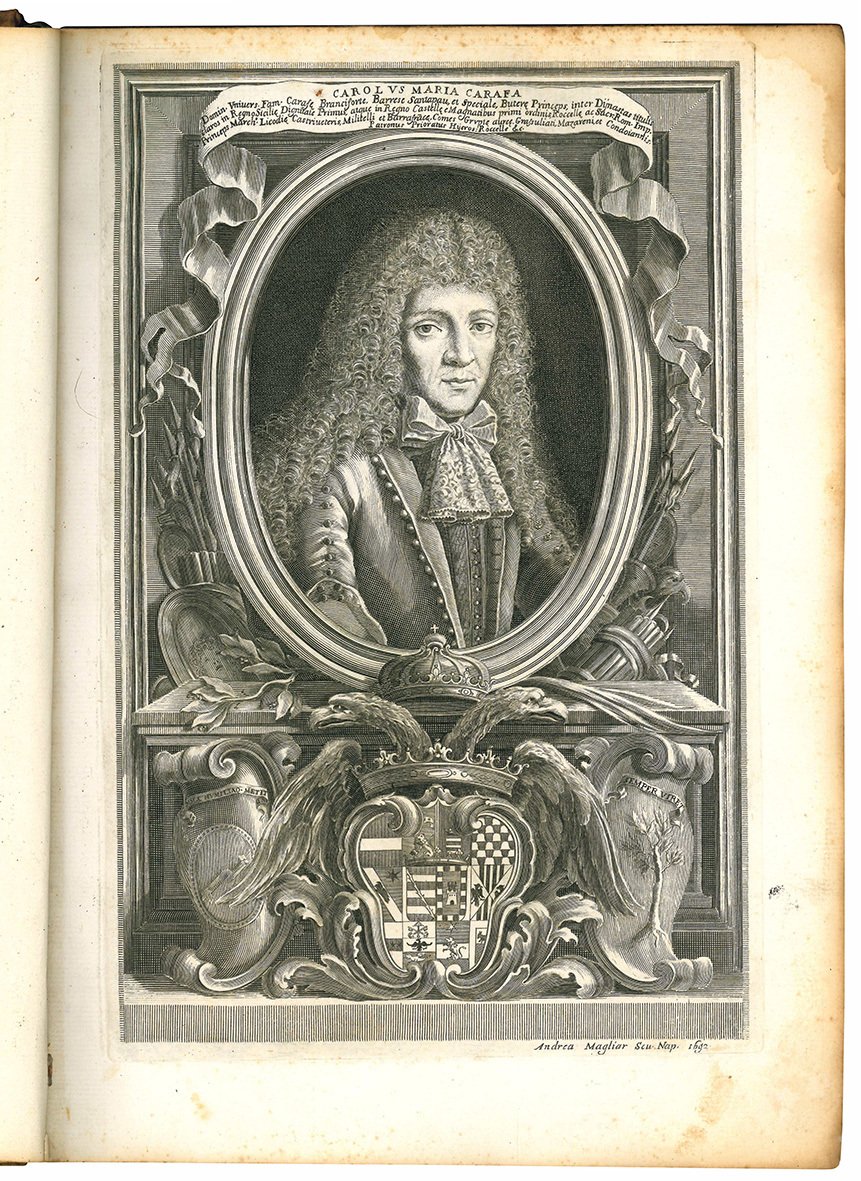
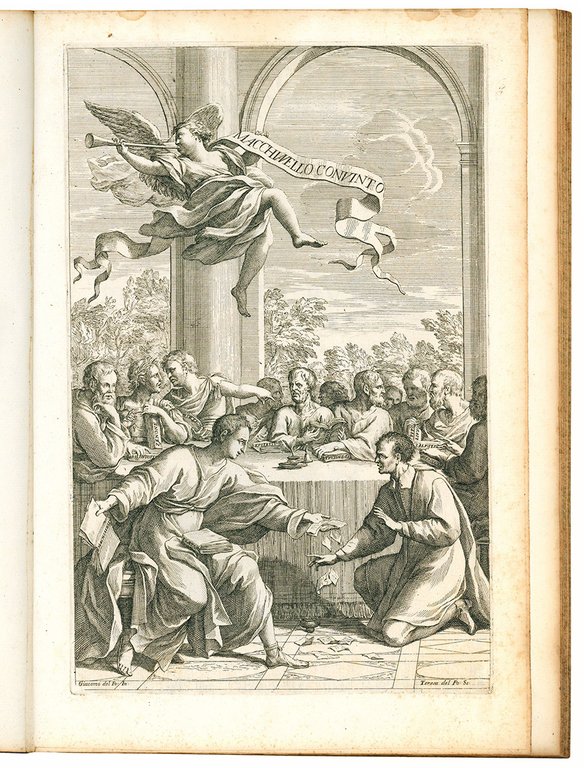
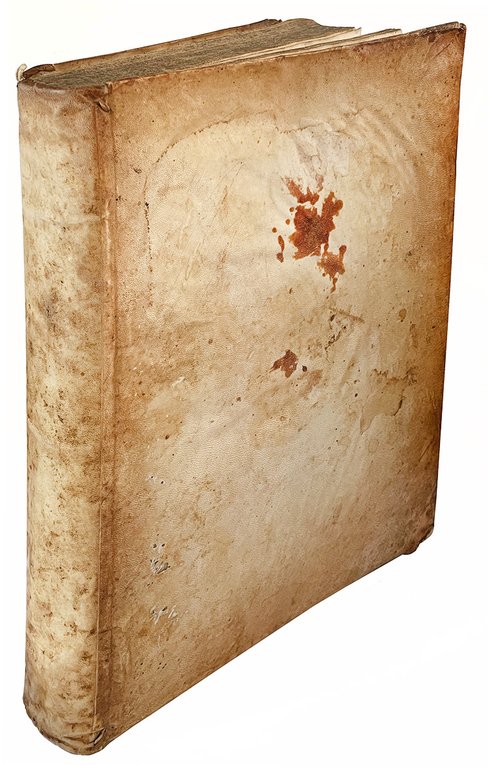
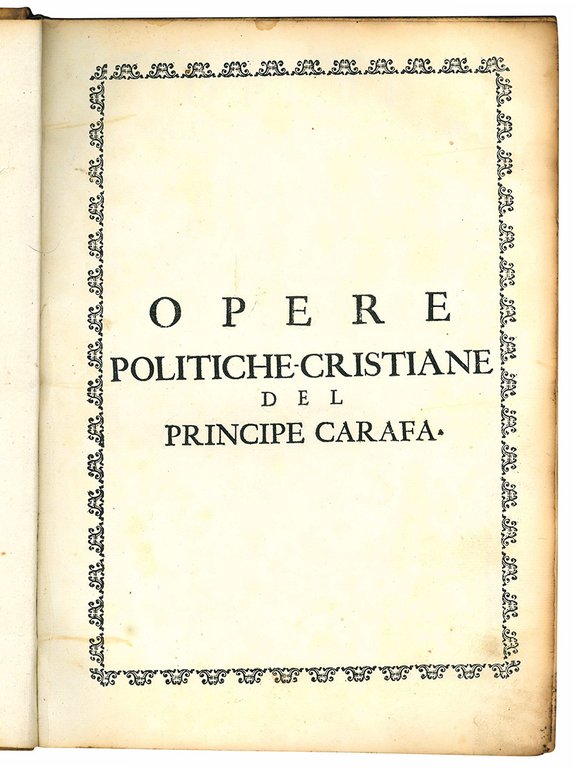

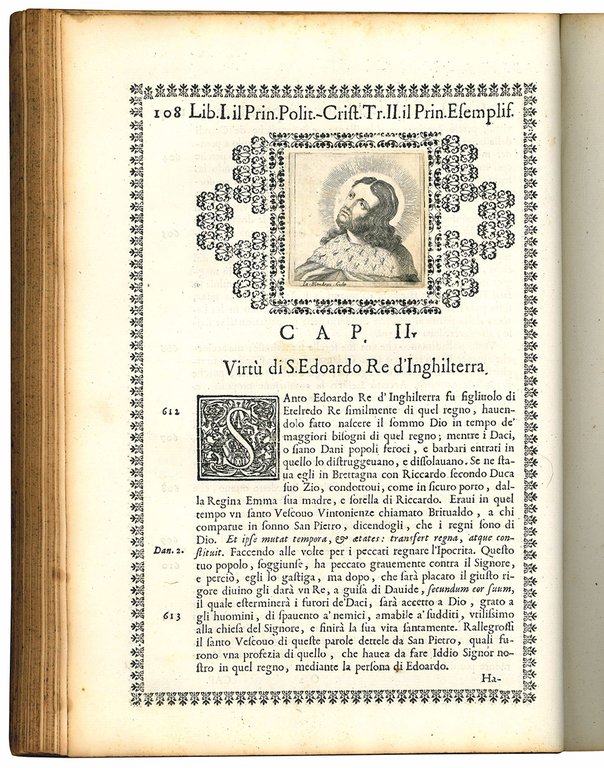
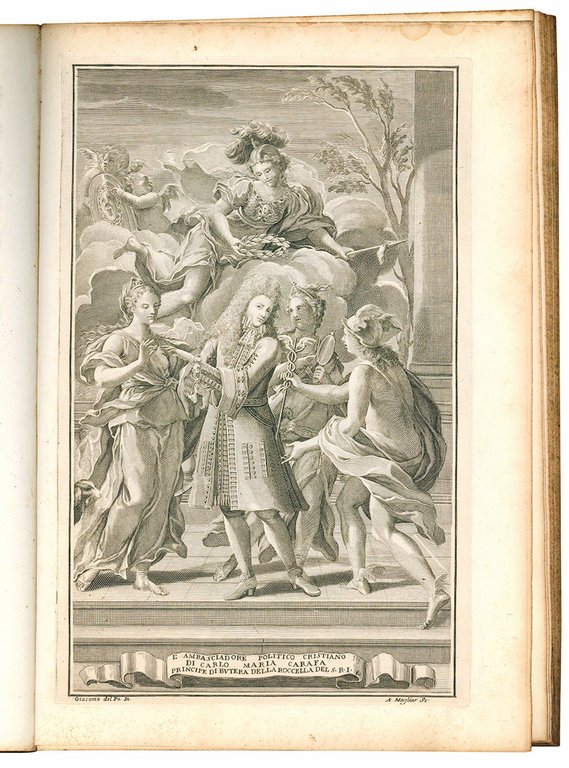
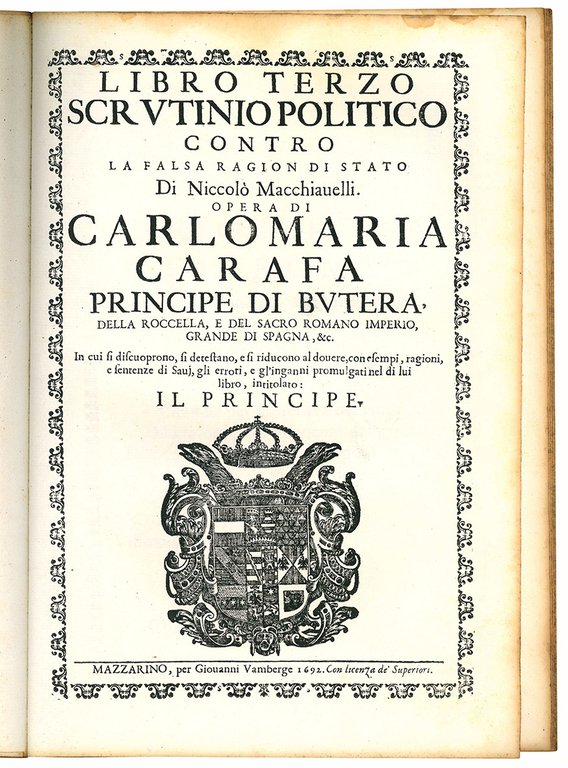

Rare and modern books
CARAFA, Carlo Maria (1651-1695)
Opere politiche-cristiane di Carlo Maria Carafa Principe di Butera, della Roccella, e del Sacro Romano Imperio, Grande di Spagna etc. Divise in tre libri
Mazzarino, Giovanni Vanberge, 1692
2400.00 €
Govi Libreria Antiquaria
(Modena, Italy)
The correct shipping costs are calculated once the shipping address is entered during order creation. One or more delivery methods are available at the Seller's own discretion: Standard, Express, Economy, In-store pick-up.
Bookshop shipping conditions:
For items priced over €300, it is possible to request an instalment plan from Maremagnum. Payment can be made with Carta del Docente, Carta della cultura giovani e del merito, Public Administration.
Delivery time is estimated according to the shipping time of the bookshop and the courier. In case of customs detention, delivery delays may occur. Any customs duties are charged to the recipient.
For more infoPayment methods
- PayPal
- Credit card
- Bank transfer
-
-
Find out how to use
your Carta del Docente -
Find out how to use
your Carta della cultura giovani e del merito
Details
Description
Three parts in one volume, folio (334x233 mm). [12], 158; [10], 156; [14], 134, [10] pp. With the full-page portrait of the author and 4 allegorical plates drawn and engraved by Andrea Magliar, Jacques Blondeau and the Sicilian siblings Giacomo and Teresa Del Po. With also 12 small engraved portraits of saints in text. Text framed by a typographical border. Contemporary flexible vellum, sprinkled edges (some staining on the panels, minor losses to two corners). Some light marginal staining, a few quires very lightly browned, but a very good, genuine copy.
RARE FIRST EDITION of one of the most beautiful books published in Sicily in the seventeenth century. It was privately printed in the workshop set up in his own palace by Carlo Carafa, Marquis of Mazzarino, who entrusted the printing first to Giuseppe La Barbera (1687-1689) from Palermo and then to the Flemish typographer Jan van Berg (1690-1992).
The volume collects all three political works by Carafa, already appeared individually in 1687, ‘90 and ‘92, namely: Il principe politico-cristiano cioè Istruzione cristiana per i principi, e regnanti (divided into Trattato primo. Il principe istrutto da' sentimenti cavati dalla Sacra Scrittura and Trattato secondo. Il principe esemplificato d'alcune virtù di principi santi scelte dalle loro vite); L'ambasciadore politico-cristiano; and finally a harsh attack on Machivalli's Principe, which opens with a beautiful frontispiece engraved by Teresa del Po after Jacques Blondeau showing historians and philosophers condemning Machievelli's works: Scrutinio politico contro la falsa ragion di stato di Niccolò Macchiavelli […] In cui si discuoprono, si detestano, e si riducono al dovere, con esempi, ragioni, e sentenze di savi, gli errori, e gl'inganni promulgati nel di lui libro, intitolato: Il principe.
According to Evola, the book, which is the last published in the prince's private printing house in Mazzarino, is an “extremely rare work and never before described”. The choice of the paper, the beautiful engravings, and the page layout show that Carafa didn't spare money on this publication and involved renowned artists for its making.
C.M. Carafa, Prince of Branciforte and Butera, was born in Caulonia in Calabria. In 1671 he succeeded his father in the titles and in the management of the vast family estates and, shortly afterwards, he married Isabella d'Avalos, daughter of the Marquis of Vasto. As a deputy of the Kingdom, in 1683 he was appointed ambassador to Innocent XI to make the traditional homage of the chinea to the pontiff. After this trip to Rome, he retired to his feuds, devoting himself to philosophical and scientific studies. He died without leaving children.
S.P. Michel, Repertoire des ouvrages imprimés en langue italienne au XVIIme siècle conservés dans les bibliothèques de France, Paris, 1968, II, p. 41 ; G. Moncada lo Giudice di Monforte, Una biblioteca siciliana, Rome, 2001, pp. 155-156, no. 485; N.D. Evola, Ricerche storiche sulla tipografia siciliana, Florence, 1940, p. 158.

